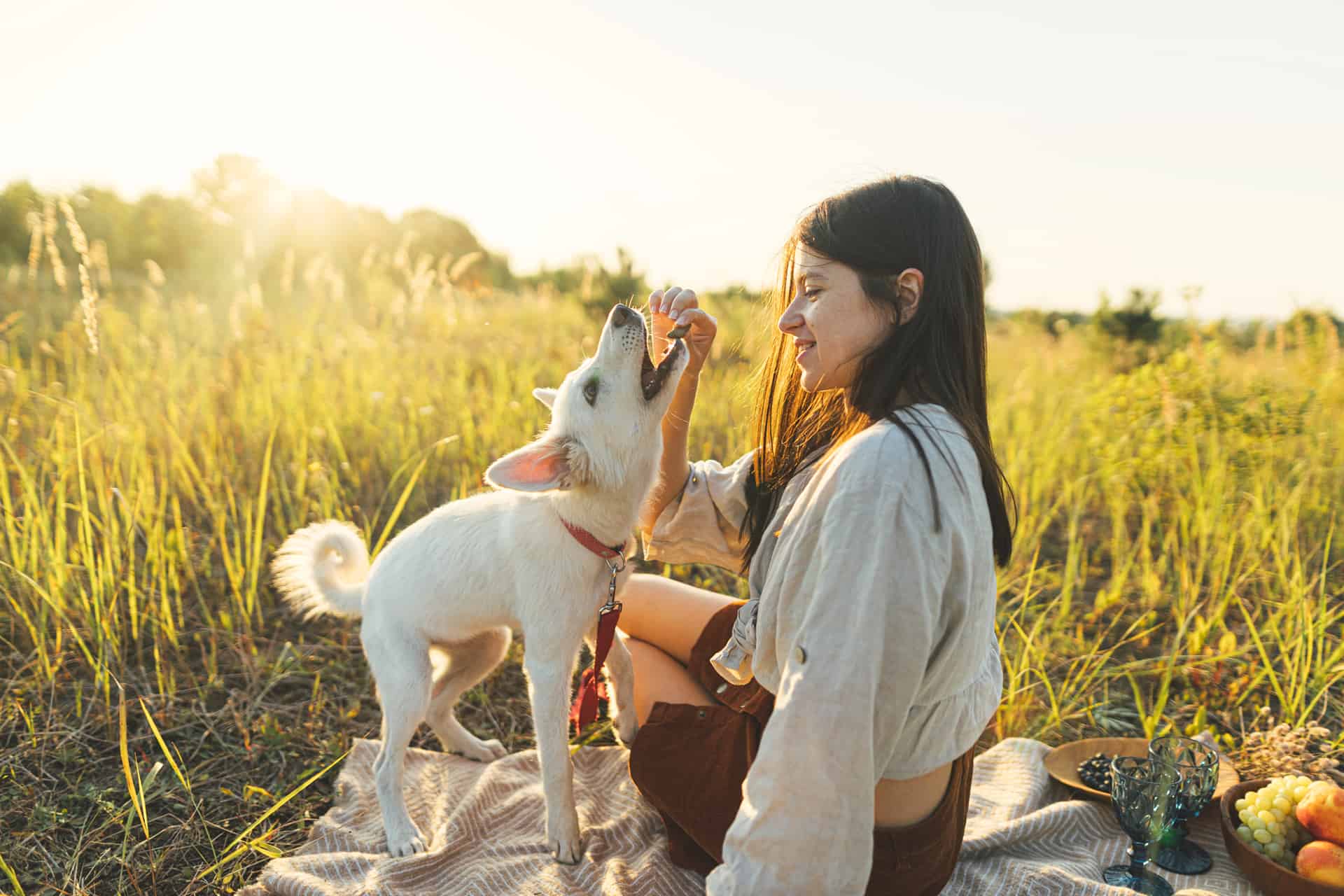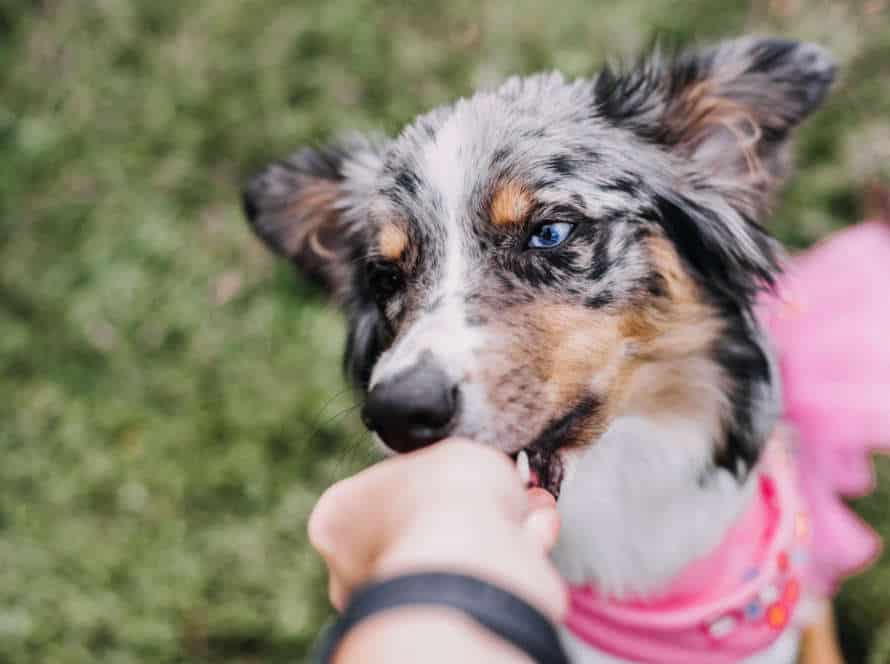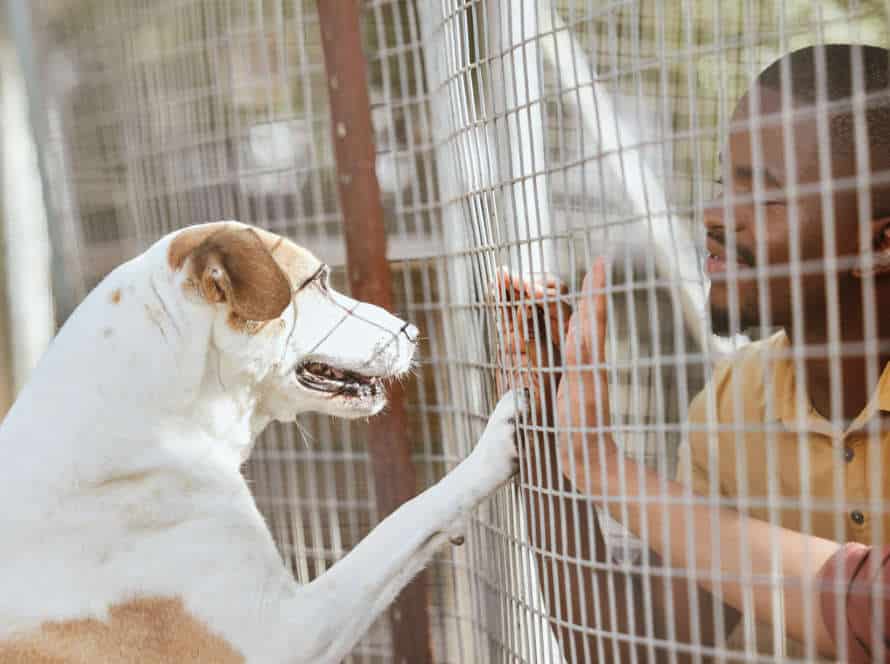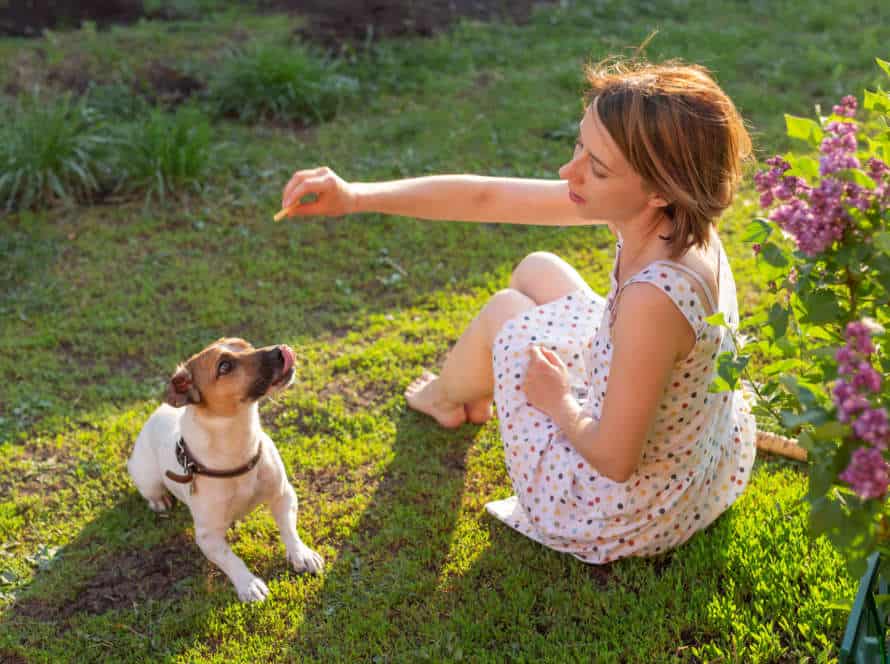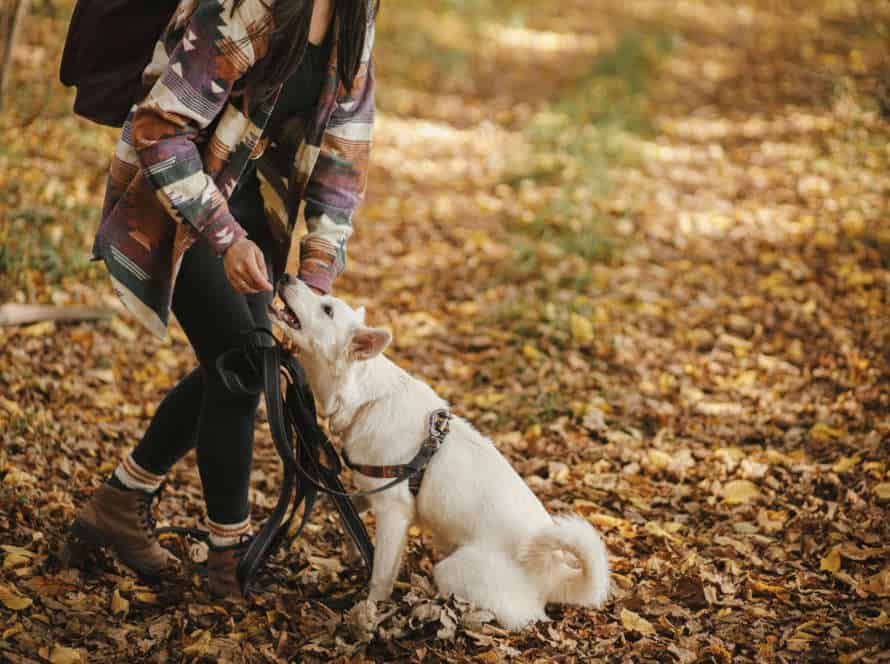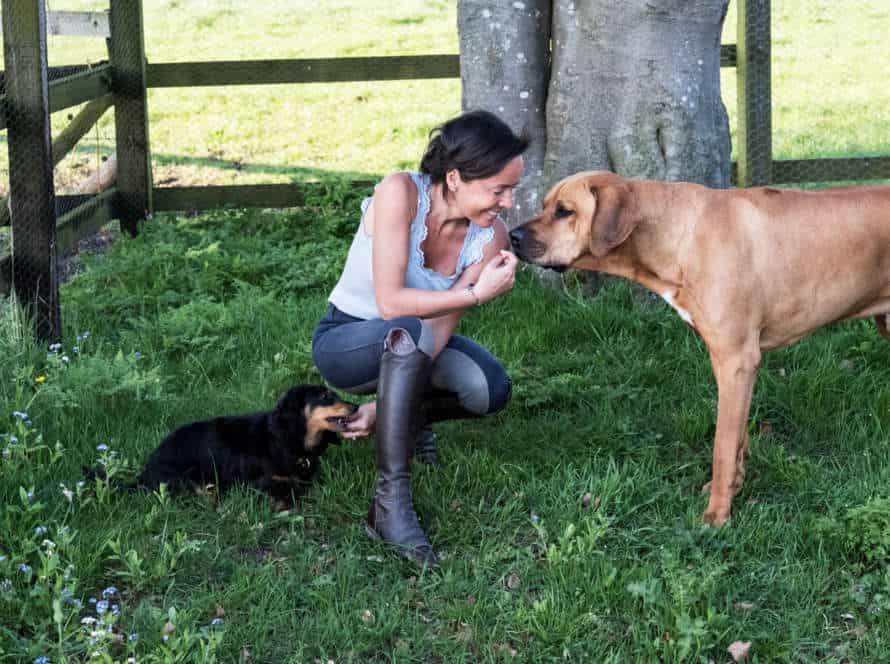Essential Positive Reinforcement Techniques Every Dog Owner Should Know
Positive reinforcement is essential for dog owners. Here’s to success:
- Praise or reward when your pup does something good. Positive reinforcement is better than punishment.
- Set boundaries and rules and stick to them. Don’t confuse your dog.
- Reward fast after desired behavior. Let your pup connect the action and reward.
- Use a mix of treats, toys, and praise as rewards. Keep your pup motivated.
Positive reinforcement is gentle and works. Make your furry pal happy and obedient with these tips!
Understanding Positive Reinforcement
Positive reinforcement is a great way to encourage desirable behaviors in our doggy pals. We can give rewards for the behavior we want, such as when they come when called. Or, when they sit when asked. Or even when they stay off the furniture! Let’s look closer at how positive reinforcement works. So that you can help your pup the best way you can.
Definition of Positive Reinforcement in Dog Training
Positive reinforcement is a type of dog training. It focuses on rewarding good behavior to make it happen again. This method uses praise, treats, or toys to promote good behavior instead of punishing bad behavior.
Every dog owner should know these essential positive reinforcement techniques:
- High-value reward: Give a treat or toy your dog loves and only use it for reinforcement. This makes the reward more important to the dog.
- Good timing: Reward your dog right after the good behavior. Otherwise, they won’t make the connection between the behavior and the reward.
- Consistent: Always use positive reinforcement to encourage good behavior. Never use punishment or negative reinforcement.
- Keep it short: Keep the training sessions fun and short. This maintains your dog’s interest.
Remember, positive reinforcement training strengthens the bond between you and your dog. It’s a win-win situation!
The Science Behind Positive Reinforcement
Positive reinforcement is a concept used in dog training, which science supports. Instead of punishing bad behavior, rewards are given for good behavior.
This main idea is: rewarded behaviors are more likely to be repeated, and unrewarded behaviors are less likely to happen again.
Essential positive reinforcement techniques every dog owner should know:
- Treats – Bite-sized treats right after the desired behavior.
- Verbal Praise – Dogs respond well to happy, excited words.
- Toy Play – Their favorite toy as a reward can help reinforce good behavior.
Consistency and patience are key. Pro tip – Reinforcement must be immediate and consistent every time.
The Benefits of Positive Reinforcement
Positive reinforcement: a great way to reward your pup! Studies have shown it’s the key to a happier, healthier pup. Here are 4 techniques you must use:
- Clicker training – using sound to signal your pup when they’ve done something right.
- Treats – use small, tasty treats to reward good behaviour.
- Praise and petting – use verbal praise and petting to show them they’ve done something good.
- Set clear expectations – your pup must know what you want them to do.
Positive reinforcement is not only a teaching tool, but also a way to build a strong bond with your pup.
Positive Reinforcement Techniques for Dog Training
Positive Reinforcement is an awesome, humane training technique for dogs. It rewards the pup for good behavior, instead of punishing bad deeds. This encourages the dog to keep doing what it’s doing for a reward! Let’s take a deeper dive into how to use this method to train your pooch.
Clicker Training
Clicker training is a positive reinforcement technique for dog training. It uses a clicker to communicate with your pup. Here’s what every dog owner should know:
- Clicker training involves teaching your pup to link a clicking sound with something good, such as a treat or praise. This helps them understand when they’ve done something right.
- Shaping behavior involves breaking complex behaviors into smaller steps and rewarding each one.
- Capturing behavior means waiting for your pup to do something desirable, then rewarding them.
- Luring uses treats or toys to guide your pup into the desired behavior.
By using positive reinforcement techniques, you can create a positive, rewarding learning experience for your furry friend.
Introduction to Clicker Training
Clicker training is a way to train pups using positive reinforcement. It requires a clicker, a small device that makes a unique sound. That sound is used to let the doggo know they have done the behavior correctly.
Firstly, connecting the sound of the clicker and a treat. Click the clicker and give them a treat right away. Do this multiple times until the pup knows what the clicker sound means.
Pick a behaviour you want them to learn. When they do it correctly, click the clicker and give them a treat.
As the pup gets better, gradually increase the difficulty of the behavior and reduce the frequency of treats. Clicker training is a kind and successful way to train without fear or punishment.
Remember: consistency is key! Make sure to use the clicker the same way, and always reward what you want them to do.
How to Teach Commands Using a Clicker
Using a clicker can be an efficient way to train your pooch commands through positive reinforcement techniques. Try this:
- Choose the command you want to teach your pup.
- Have your clicker and treats ready.
- Wait for your dog to do the desired behavior, for example sitting or staying.
- Click the clicker and give a treat right away when the pup does the desired behavior.
- Repeat this process – click the clicker and give a treat each time your dog does the desired behavior.
- Your dog will connect the click of the clicker with a reward and start doing the desired behavior without prompting.
Be patient and consistent during training and reward your pup with treats and positive reinforcement when they do the desired behavior. Pro tip – Make the clicker sound more appealing by using a high-pitched sound.
Target Training
Target training is a great way to train your pup. It’s a positive reinforcement technique that helps them focus and obey. To do it, you need a target object like a ball or stick.
Here are the steps involved in target training for your pup:
- Hold the target object close to your pup’s nose to get their attention.
- Move the target object away a bit from their nose.
- Say a command like “touch” or “target” and encourage them to touch the target object.
- Reward them with treats, praise, or playtime when they do.
- Gradually increase the distance and difficulty of getting them to touch the target object.
- With practice, they’ll learn to focus and follow commands.
Be patient and use yummy rewards to motivate them.
Introduction to Target Training
Target training is a popular, positive reinforcement technique used to teach dogs to touch a specific object with their nose or paw when cued. It’s easy to learn and can help teach basic obedience commands, like ‘come’, ‘heel’, and ‘stay’.
Here’s how to use it:
- Choose an object, like a stick, ball, or your hand.
- Show it to your dog, then reward them with a treat when they touch it with their nose or paw.
- Repeat often, so that your dog knows they will get a reward when they touch the target.
- Move the target around and give rewards each time they touch it.
- Add verbal cues like ‘touch’ or ‘target’ while presenting the target, until your pup understands the command.
- Your pup can learn lots of behaviors with target training and positive reinforcement. Plus, it’s fun and strengthens your bond!
Pro Tip: Always use positive reinforcement to train your pup – it builds trust and respect and leads to better obedience and behavior.
Using Target Training to Teach Commands
Target training is key in teaching your pooch commands and behaviors. Here’s how to do it:
- Step 1: Get a target, like a rubber cone or tape on your hand.
- Step 2: Show it to them. Give a treat when they sniff or touch it.
- Step 3: Repeat. Use positive reinforcement and treats.
- Step 4: Link a command, like “touch” or “target,” to the behavior.
- Step 5: Increase difficulty by moving the target or adding distractions.
Target training is a fun way to teach your dog new commands. Pro Tip: Keep it short and positive, so your pup stays engaged and motivated.
Treat Training
Treat training is a powerful way to positively reinforce doggy behavior. Here are four tips for success:
- Timing is essential – Give the treat instantly after the wanted action.
- Consistency matters – Say the same words and give the same reward each time.
- Training sessions should be short – Keep it snappy for greater engagement.
- Switch up the treats – Offer different snacks to maintain interest.
By using treats, your pup will learn that good behavior leads to nice rewards. Pro tip – Little treats work well to keep them motivated.
Choosing the Right Treats
Choosing treats for positive reinforcement dog training? Consider your pup’s preferences and diet! Here are some tips:
- Size matters: Pick a treat small enough to eat quickly.
- High-value treats: Cooked chicken, freeze-dried liver, or cheese – what does your dog love?
- Check ingredients: Go for high-quality, natural ones free of artificial flavors or preservatives.
- Meet dietary needs: Choose treats that suit your pup’s age, size, and diet.
By getting the right treats, your pooch will be motivated to learn, and positive reinforcement will be effective!
Using Treats to Reward Good Behavior
Reward your pup with treats for good doggy behaviour! This positive reinforcement technique will help your dog to link good behaviour with positive outcomes.
Steps for success:
- Have a yummy treat ready for during training.
- Give clear verbal or hand signals for the desired behaviour.
- Reward with the treat and kind words.
- Keep repeating the process and eventually phase out the treats.
Pro tip: Use small, soft treats that are easy to chew and digest. No overfeeding allowed!
Praise and Affection
Praise and affection are two great methods that all canine owners should learn when training their four-legged friends. These techniques help reinforce good behavior and strengthen the connection between you and your pup.
To use them effectively in dog training:
- Speak with a happy and excited voice when your pup acts how you want them to.
- Reward their behavior with a treat or toy.
- Give them love and pet them when they do something right.
- Do not punish or scold your dog with a loud voice, as this could cause fear and anxiety.
If you use these techniques in combination with other positive reinforcement techniques, like clicker and crate training, you can make your pup both well-behaved and content.
Incorporating Praise and Affection into Training
Positive reinforcement is necessary for dog training. Incorporating praise and affection is a great way to do this.
Use a happy voice when giving commands and praising. Reward good behavior with treats or kind words like “good boy/girl” or “well done“. Show physical affection like petting or belly rubs. Be consistent, patient and reward quickly after desired behavior. Doing this creates a loving relationship and reinforces good behavior.
Using Praise and Affection to Reinforce Positive Behavior
When training a dog, positive reinforcement is key!
Praise and affection can do wonders. For desirable behaviors like obeying commands, shaking paws, or being calm in stressful situations, reward them with these pleasantries.
Here are some tips to use this technique effectively:
- Be cheerful when praising your pup.
- Show physical affection, like scratches, belly rubs, and hugs.
- Occasionally give treats too!
- Be consistent and your dog will learn the best behaviors.
Common Mistakes to Avoid When Using Positive Reinforcement
Bonding with your pup? Positive reinforcement is a great tool. Yet, take note – there are common mistakes owners make when using it. Mistakes that can have a bad effect on their dog’s behavior. Let’s cover some of the most common ones. To make sure you and your pup have the best experience with positive reinforcement, avoid these missteps!
Timing
Timing is key when it comes to positive reinforcement dog training. Make a mistake and your progress will suffer! Here are some common mistakes to avoid and best practices for positive reinforcement:
- Delaying the reward. Give it ASAP when they do the desired behavior.
- Forgetting the marker signal. A clicker or “yes!” will tell your pup they did the right thing, and a reward is coming.
- Rewarding the wrong behavior. Be specific, and make sure the reward follows the right action.
Best practices: High-value rewards (treats, toys, praise), consistency, short sessions, and replacing bad behavior with good.
Pro tip: Timing and reward type consistency can make a huge difference. Need help? Hire a pro dog trainer!
Rewarding the Wrong Behavior
Many dog owners make a common mistake of rewarding wrong behavior when using positive reinforcement. This leads to frustration for both the owner and the pet.
Examples of wrong behavior rewards:
- Rewarding the pet when they didn’t fully complete the desired behavior.
- Giving attention, treats or praise when they do bad things.
- Unintentionally rewarding secondary behavior.
Essential tips for positive reinforcement:
- Timing is essential – rewards should be given right after the desired behavior.
- Consistency – give rewards each time the desired behavior is done.
- Clear communication – use straightforward commands to explain desired behavior.
- Gradual progression – begin with basic commands and increase difficulty step-by-step.
Using positive reinforcement in the right way is extremely important for successful communication with your pet and for encouraging good behavior.
Failing to be Consistent
Consistency is a must for training your pup with positive reinforcement. Without it, this approach won’t work! Some mistakes to sidestep are:
- Inconsistent Timing: Rewards must happen at the right moment. Too late and your pup won’t understand. Too soon, and their behavior might be off.
- Mixed Signals: You don’t want to mix up your rewards or commands. Keep them the same!
- Giving Up Too Quickly: Don’t give up on this method too soon or switch it up too often. Stick with it and you’ll see results.
If you dodge these mistakes, you can use positive reinforcement to train and bond with your pup.
Remember: Pay attention to what your pup likes and adjust your rewards accordingly.
Not Recognizing Your Dog’s Limitations
As a pup-parent, it’s key to know your dog’s limits when utilizing positive reinforcement as a training technique. While positivity can be an efficacious way to teach your dog new behaviors, it’s vital to use the correct methods to dodge usual errors.
When using positive reinforcement, stay away from the blunder of not appreciating your dog’s boundaries by:
- Establishing realistic goals: Don’t expect your pup to ace complex tricks or habits right away. Divide the training into mini, achievable steps to dodge disappointment for you and your pup.
- Noticing body language: Dogs talk through their body language. Notice your dog’s signals to evade pushing them beyond their physical or mental boundaries.
- Offering positive feedback: Honor small successes and back up positive behavior with treats, approval, or playtime. This stimulates your pup to keep learning and enhance their behavior.
Pro tip: Positive reinforcement should always be employed with other pup training techniques, like the right nutrition, playtime, and daily exercise, to make sure comprehensive and healthy growth for your furry buddy.
Putting Positive Reinforcement into Practice
Positive reinforcement is a common way to teach dogs new behaviors and keep them doing the ones they already know. Rewards are given when the desired behavior is done. This encourages good behavior and helps build a stronger bond with your pup. So, how does it work? And how can you use it? Let’s find out!
Setting Goals for Training
Setting goals for training is a must for successful positive reinforcement techniques. It gives you and your pup a focus. Here’s the steps to follow:
- Identify skills, like “sit” or “stay“.
- Break down complex tasks into smaller steps.
- Create a training schedule with a fixed time.
- Use treats or verbal praise to motivate and reinforce good behavior.
- Keep a log of your pup’s progress, and celebrate small victories.
With regular practice and positive reinforcement, your dog will learn the desired skills quickly.
Establishing a Training Plan
Creating a training plan is key for teaching your dog good habits with positive reinforcement. Here are 5 must-know techniques:
- Don’t punish – reward your pet’s correct behavior with treats, toys or praise.
- Be consistent and repeat – use the same commands and rewards all the time. Increase difficulty gradually.
- Set achievable goals – start small and work up to more challenging tasks. This will boost your pup’s confidence.
- Keep sessions short – dogs have short attention spans. Train for 5-10 mins, 2-3 times daily.
- Stay patient and upbeat – training takes time and patience. Use positive reinforcement and don’t give up.
By following these steps, you can help your pup learn behaviour and form a strong bond. Remember – every dog is different. So be open-minded and adapt to their individual needs.
Tracking Progress, Making Adjustments
Track progress and make changes for successful positive reinforcement for your pup.
Set clear goals.
Keep track of successes and areas that need improvement.
Use positive reinforcement techniques consistently, rewarding good behavior.
If no response to a technique, try different approach or consult a pro.
Frequently adjust the plan to ensure your dog’s success.
Remain patient and consistent – positive reinforcement takes time and effort.
Pro Tip: Use a training journal to keep track of progress and adjust methods.
Conclusion
To finish, positive reinforcement techniques are key for dog owners who want to build a solid connection with their furry friends and shape good behavior. Here are some of the important positive reinforcement techniques all dog owners should be aware of:
- Treats and compliments: Hand out treats and speak kindly when your pup does something right to motivate them to repeat those actions.
- Clicker training: Utilize a clicker to mark and reward the behaviors you want from your doggo.
- Consistency and patience: Keep reinforcing good behaviors and be patient with how your pup is progressing.
- Punishment avoidance: Refrain from punishment and negative reinforcement as it can damage the connection you have with your pup and worsen aggression and anxiety.
By using these techniques, you can create a positive and loving bond with your pup and cultivate good behavior and obedience.
Frequently Asked Questions
1. What is positive reinforcement?
Positive reinforcement is a training technique where a desired behavior is rewarded to increase the likelihood of it repeating in the future.
2. How does positive reinforcement work?
Positive reinforcement works by associating a desirable behavior with a reward, such as a treat, toy, or praise. This strengthens the neural pathways in the brain and makes the behavior more likely to be repeated in the future.
3. What are some examples of positive reinforcement for dogs?
Some examples of positive reinforcement for dogs include giving treats, playing with toys, providing praise, and giving belly rubs. It’s important to find what motivates your individual dog.
4. Can positive reinforcement be used for all breeds and ages of dogs?
Yes, positive reinforcement can be used for all breeds and ages of dogs. It’s a gentle and effective way to train your dog and build a strong bond with them.
5. Are there any risks or downsides to using positive reinforcement?
There are no significant risks or downsides to using positive reinforcement. However, it’s important to use it consistently and appropriately to avoid unintentionally reinforcing unwanted behaviors.
6. Can positive reinforcement help with behavior problems?
Yes, positive reinforcement can be very effective in addressing behavior problems such as excessive barking, jumping, and aggression. By rewarding desirable behaviors, you can redirect your dog’s attention and positively reinforce the correct actions.

